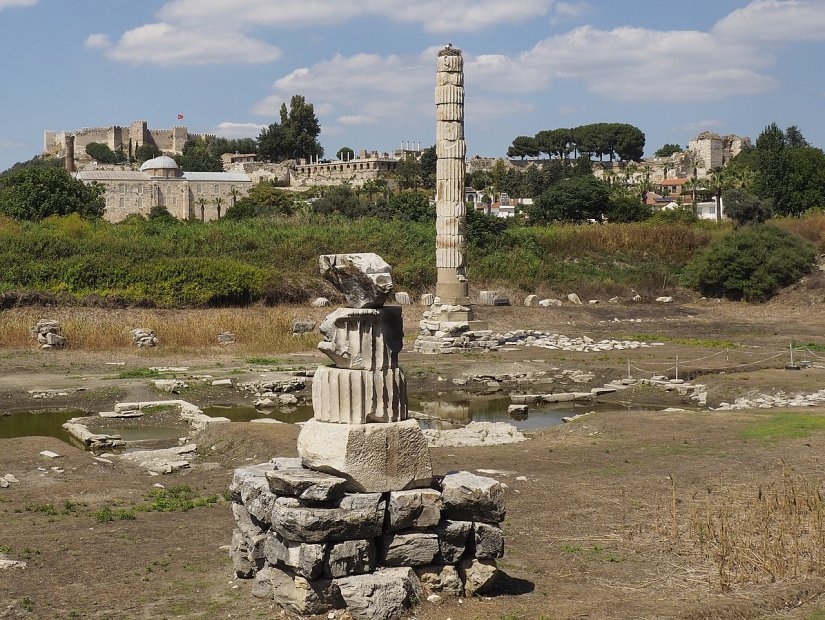Blog
Temple of Artemis
Temple of Artemis
The Temple of Artemis, located in the ancient city of Ephesus, 50 km from Izmir, is also known as the Temple of Diana. There are different opinions about the construction of the temple. The most common of these is that it was built for Artemis, the god of fertility, by the order of the Lydian king Croesus in 550 BC and is the work of a 120-year project. It was built by Cretan architects around 550 BC. The rich king of Lydia, Croesus financed the construction.
All information about the temple is based on what the historian Plynus told. According to Plynus, the temple was 115 meters long, 55 meters wide, and almost entirely made of marble. The temple was decorated with bronze and marble sculptures of the most famous artists of the period. The artists competed to create the most beautiful sculpture in the temple.
It was a temple inside and a bazaar outside. The Temple of Artemis was also a religious institute. For centuries, those who presented their beliefs and desires to the goddess brought gifts. Bracelets, earrings, necklaces, ivory statues were found during the excavations. The tourists coming to the temple offered the gold and ivory jewelry they bought from the bazaar to the fertility goddess. Thanks to its economic conditions in the region, merchants and travelers from all over Anatolia visited the Temple of Artemis.
The day the temple was burned coincided with the birth of Alexander the Great. According to the myth, the goddess Artemis was so concerned about the birth of Alexander the Great that she didn't even care about the fire in her own house. Alexander the Great wanted to repair the temple, but he died before he could do it. Faithful followers of the goddess repaired the temple after each damage.
Later, the city of Roman Emperor Constantine was rebuilt, but the temple was not rebuilt because the Romans were Christians. In 262 BC, a great fire broke out, and a large part of the temple was burned. Most of its remains were fragmented by Christians and used in the construction of other structures. Left unrepaired, the temple gradually disappeared, and today only one column remains to reveal the temple's location.


